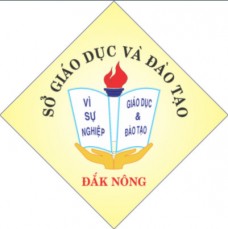The brand new lengths off transcripts is defined with respect to straight ribosomal footprints (R
Người đăng: Ngày đăng: Lượt xem:
Our TASEP implementation considers individual ribosome transitions along mRNA transcripts that belong to four classes: three of these are “endogenous” and therefore native to the cell (ribosomal (R), enzymatic (E), housekeeping (Q)), while one is unnaturally engineered into the cell (“heterologous” (H)). f), where 1 R f equates to 30 nucleotides , making each Rf account for 10 amino acids. As in , each transcript contains 30 successive footprints (900 nucleotides), except for R proteins, which contain 750 footprints (22,500 nucleotides), to reflect that ribosomes are multi-protein complexes requiring more resources to build [54,55]. While modelling mRNA degradation, “ribosome protection” is considered whereby transcripts cannot be degraded unless they are free from ribosomes. We focus our core results on a simple scenario that highlights the effects of ribosomal queues in order to clearly observe their impact. This illustrative scenario considers one slow codon with a relative efficiency of 0.5% at position 26 R f on a transcript of length 30 R f . Other positions and efficiencies were also explored, and are reported in the Supplementary Information (Figure S2).
Inside per county change, the likely ribosomes possess a chances to help you changeover to the next codon, with backwards transitions and you can detachments being forgotten the help of its rarity. New transition probability of per ribosome are proportional towards abilities of your own codon becoming interpreted, and thus, by using codons that have differing efficiencies, we could simulate the existence of “slow codons” and therefore the formation of ribosomal queues. In the event that a good ribosome is actually right behind other, their submit change chances try submitted since no such that it cannot be chosen getting a changeover. This might be an option difference that have traditional TASEPs, which will expend computational time very first looking a good queuing ribosome and after in search of it cannot move ( Contour dos good). Once an excellent ribosome is located at the past codon out-of an excellent transcript, that after that elongation step launches it to manufacture a proteins molecule.
Shape dos b shows exactly how that it interpretation framework was stuck in the new wide entire-telephone design, when you are Shape 2 c screens a premier-down position of all processes, reflecting the brand new qualitative matchmaking involving the cell’s indigenous gadgets, their heterologous protein creation and its increases
StoCellAtor’s translation model in context. (a) The difference between classic TASEP and StoCellAtor in terms of choosing ribosome movement via the transition vector (TV). (b) The simulation steps taken during translation in the context of a resource-limited whole-cell model, which considers nutrient metabolism, transcription and translation. Step 1: a non-queuing ribosome is selected for movement. Step 2: the chosen ribosome position is updated. This ribosome might become “queuing”, while the ribosome behind it becomes free to move. This is reflected in the updated TV (red values). (c) A top-level sumong the cell’s resources, its heterologous protein production and its growth. The activation and inhibition arrows denote general effects and not specific reactions.
dos.3. Design Have fun with Instances
To make use of all of our design in order to relevant experimental options, i use an analysis pipe that uses steady-condition simulator opinions to understand more about the latest effect out-of a good construct’s build (supporter energy, RBS energy and codon composition) on growth rate ( G r an excellent t elizabeth ) and you can heterologous healthy protein design speed ( H roentgen a  good t age ) ( Figure step three ). I next make use of these thinking in order to determine the newest protein produce you to definitely you may officially be obtained throughout the years for the an evergrowing cellphone society in two circumstances: uncapped great growth and you will increases inside a great turbidostat at steady state. The previous provides understanding of just how character develop whenever there are no development constraints, while the latter offers an insight into regular proceeded people settings where phone thickness is actually leftover lingering by adjusting the dilution rate. According to the fresh circumstances, all of our research would be applied to other types regarding proceeded society, particularly a good chemostat the spot where the population’s growth rate was was able constant of the modifying new nutrient quantity. Yet not, i planned to be the cause of problems where growth rate regarding a society could possibly get alter mid-test, eg mutations taking place to your synthetic construct. In cases like this, a beneficial chemostat do replace the nutrient quantity and in turn apply at the latest telephone occurrence to reset the growth rates, just like the turbidostat do merely to improve the fresh new dilution price to keep the fresh telephone occurrence lingering.
good t age ) ( Figure step three ). I next make use of these thinking in order to determine the newest protein produce you to definitely you may officially be obtained throughout the years for the an evergrowing cellphone society in two circumstances: uncapped great growth and you will increases inside a great turbidostat at steady state. The previous provides understanding of just how character develop whenever there are no development constraints, while the latter offers an insight into regular proceeded people settings where phone thickness is actually leftover lingering by adjusting the dilution rate. According to the fresh circumstances, all of our research would be applied to other types regarding proceeded society, particularly a good chemostat the spot where the population’s growth rate was was able constant of the modifying new nutrient quantity. Yet not, i planned to be the cause of problems where growth rate regarding a society could possibly get alter mid-test, eg mutations taking place to your synthetic construct. In cases like this, a beneficial chemostat do replace the nutrient quantity and in turn apply at the latest telephone occurrence to reset the growth rates, just like the turbidostat do merely to improve the fresh new dilution price to keep the fresh telephone occurrence lingering.




































